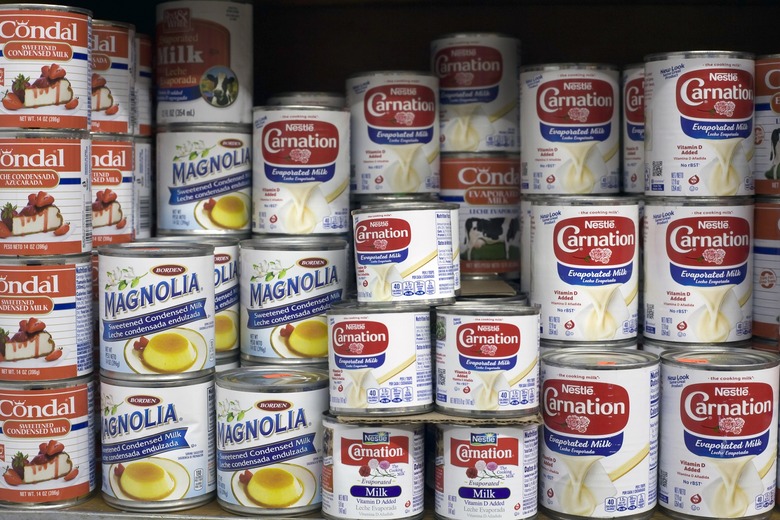What Is The Difference Between Evaporated Milk And Condensed Milk?
Whether you're an avid baker or an amateur still working on your skills, you've probably used both evaporated milk and condensed milk at one time or another — perhaps even together. With differences in taste and consistency, the two are clearly not the same. So just what is it that makes them different from one another?
The Healthiest and Unhealthiest Creamers for Your Coffee
When milk has 60% of its water removed, it's known as evaporated milk. This milk, which has a slightly darker color than whole milk, is then homogenized and packaged in heat-sterilized, sealed cans.
Condensed milk, also called sweetened condensed milk, is essentially evaporated milk that has had sugar added to it, which means it is far sweeter, with sugar making up 40% to 45% of its weight. While both condensed milk and evaporated milk's nutrients are condensed in the process of evaporation, the iron and Vitamin C in condensed milk is nearly eliminated entirely.
Evaporated milk is popularly used in tea drinks around the world, as well as coffee, and while it is also seen in dessert recipes, condensed milk is far more frequently used to make impressive, decadent desserts.
Because condensed milk contains added sugar, it cannot be used as a direct substitute for evaporated milk. However, you could substitute evaporated milk for sweetened condensed milk and add sugar. One cup of undiluted, condensed milk does contain 13 tablespoons of sugar and 1,000 calories, so it's best to limit your use of condensed milk or make your recipes using up the last bit of your gallon of milk instead.
